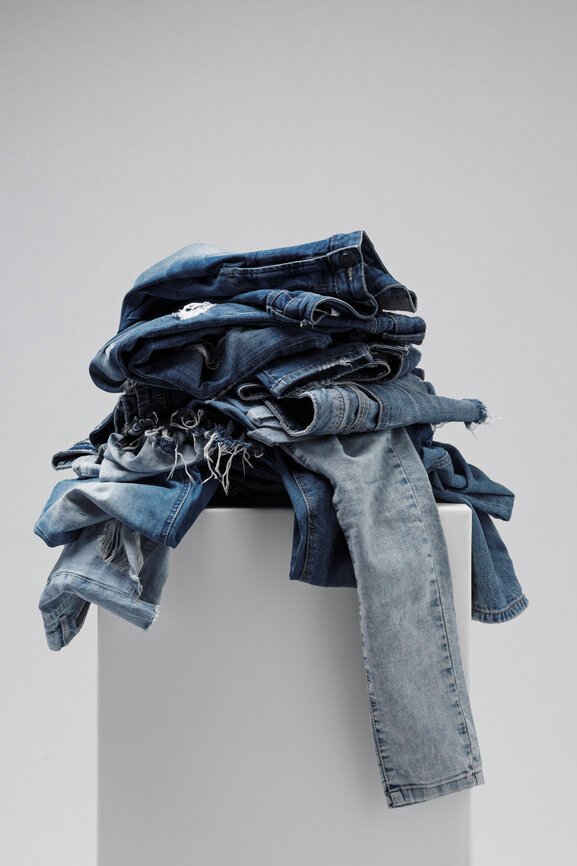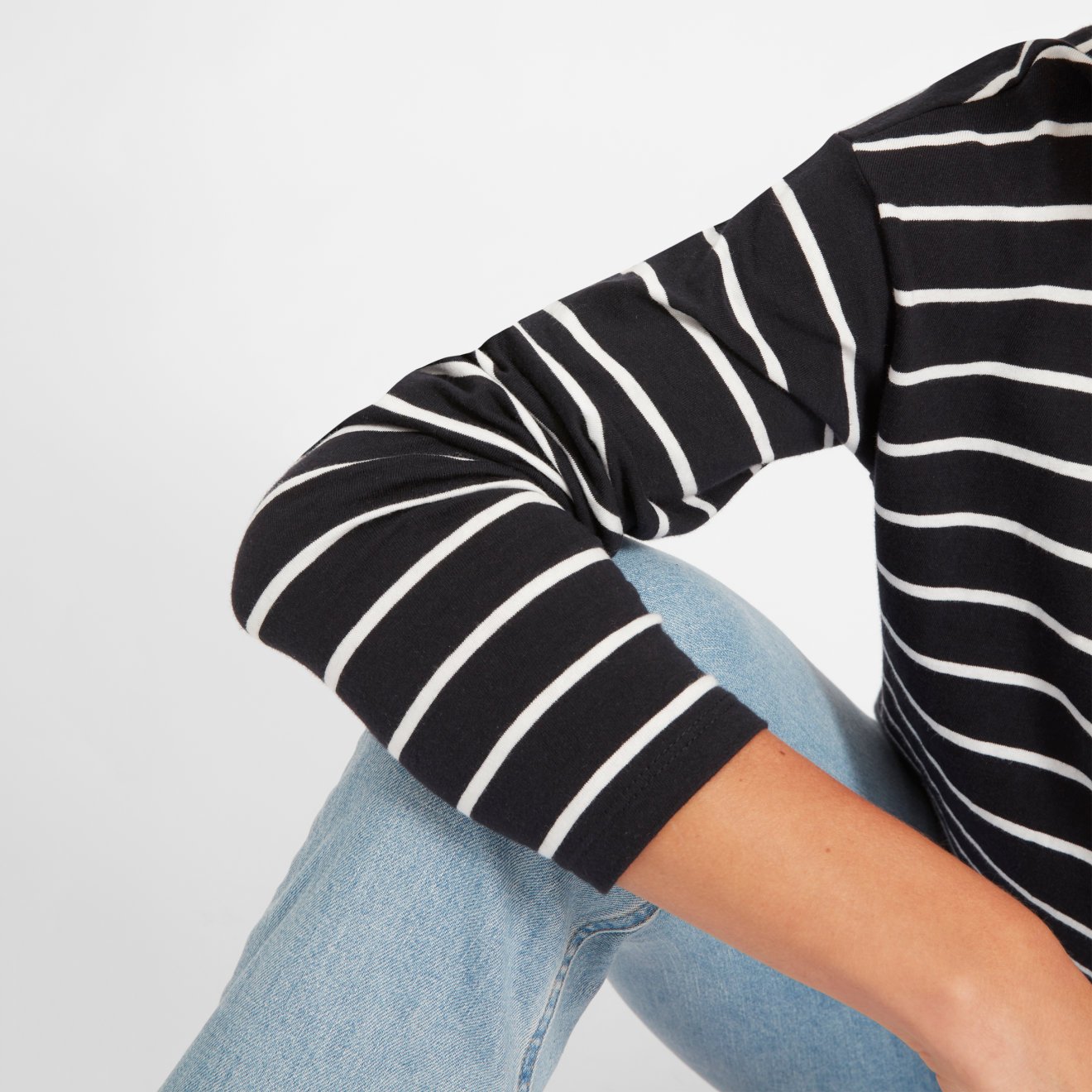
What Is Circular Design—And How Can It Change The Fashion Industry For Good?
Design Can Change The World
When it comes to creating a more sustainable fashion future, our individual impact is important; it keeps us aware and motivated day in and day out. However, it’s becoming increasingly clear that without a larger movement, our daily efforts in isolation will never be enough.
Luckily, both can occur in tandem—you can call your representative and shop secondhand, you can sign a petition and wash your clothing with cold water. Circular design combines these macro and micro actions, by requiring planning for all parts of a product’s life cycle, including end-of-life recycling.
“The current model for consumption is “take-make-dispose,” while a circular model considers the reusability of products and materials.”
The current model for consumption is “take-make-dispose,” while a circular model considers the reusability of products and materials. A circular economy is a new system for responsibly managing our resources in a way that helps heal the earth instead of continuing to hurt it.
Circular design also takes into account the importance of consumer, company, and government roles in the fight against our harmful fashion industry, calling upon all of these entities to make changes in the fashion lifecycle.
The three organizations below are doing the hard work to present ideas, actions, and guidance towards production systems that no longer leave devastation behind. Traditional fashion poses a huge problem and therefore needs a huge solution—this means we all must work together.
The Ellen MacArthur Foundation
Working to create a circular economy
“[A circular economy]… is restorative by intention; aims to rely on renewable energy; minimizes, tracks and eliminates the use of toxic chemicals; and eradicates waste through careful design.”
The Ellen MacArthur Foundation, established in 2010, is helping us move towards a circular economy. The charity has become not only a source of funding, but a thought leader in many industries, including fashion. The foundation defines the term “circular economy” in relation to our existing resource management system as “an industrial economy that is restorative by intention; aims to rely on renewable energy; minimizes, tracks and eliminates the use of toxic chemicals; and eradicates waste through careful design.”
In May 2017, the Ellen MacArthur Foundation launched an initiative to take us one step closer to the circular economy goal: Make Fashion Circular. First dubbed the “Circular Fibres Initiative,” this initiative aims to bring together “brands, cities, philanthropists, NGOs, and innovators” from across the fashion industry to collaborate on sustainable solutions. We are rapidly running out of resources and the UK-based organization hopes to change the trajectory of fashion for good.
This Make Fashion Circular initiative outlines four steps needed to alter our harmful textile consumption:
Phase out substances of concern and microfiber release
Increase clothing utilization
Radically improve recycling
Make effective use of resources and move to renewable inputs.
Participants of this initiative include big names such as Burberry, Gap Inc., H&M Group, and Nike. It will be interesting to see how these leaders, not often known for their sustainability efforts, will band together to create a circular fashion system. This is a complete overhaul of the fashion industry as we know it and seems incredibly daunting, though the Ellen MacArthur Foundation (along with industry leaders) are giving the rest of us hope for a smarter and more conscious fashion future.
Circular Fashion
Providing resources to fashion brands and consumers alike
Circular fashion, according to Dr. Anna Brismar, is anything designed “to be used and circulated responsibly and effectively in society for as long as possible in their most valuable form, and hereafter return safely to the biosphere when no longer of human use.“
Dr. Brismar is the founder and owner of Green Strategy, a consultancy company, and Circular Fashion, a platform dedicated to the term. Through 15 years of experience as a consultant and researcher, the Swedish entrepreneur has studied environmental sustainability up close.
Her previous work has led her to become an expert in guiding companies and consumers towards more sustainable practices. In June 2014, she and Felix Ockborn (former environmental sustainability coordinator for H&M Stockholm) independently coined the term Circular Fashion.
She explains the term by sharing examples of what circular fashion can entail, such as:
The elimination of toxic chemicals
Reusable design components
High-quality materials
Reclaimable or recyclable products
Dr. Brismar goes a step further and discusses the responsibility of the consumer within circular fashion, which means taking into account what the lifecycle of a garment can or should be before purchasing or tossing it.
A deeper discussion about these topics occurs on Circular Fashion, which is a website dedicated to circular issues in fashion. If Green Strategy is a more company-facing entity, Circular Fashion gears its content towards a public discussion. Here is where Dr. Brismar details the sixteen key principles needed to make the fashion industry circular.
The site also includes a page of resources for ‘key actors and projects’ within the circular fashion movement, making it easy for anyone to keep tabs on the industry’s progress. Although the public is just starting to learn of these concepts, sites like Circular Fashion make access to this growing movement that much easier.
Cradle to Cradle
Advocating for closed loop systems
Cradle to Cradle is a design philosophy as well as a non-profit organization that certifies products through their own Cradle to Cradle Certified™ Products Program.
Founded in 1992 by William McDonough and Dr. Michael Braungart, Cradle to Cradle is dedicated to closing the loop in the way we produce things, which is a core tenet of circular design. In 2002, they co-authored Cradle to Cradle: Remaking the Way We Make Things.
This book summarizes their journey of discovery about materials, their durability, and their evolution. In 2010, the company decided to scale their operations in a more accessible direction by way of their certification program and publicly-available methodology. This was all made possible by the establishment of the Cradle to Cradle Products Innovation Institute. From then on, C2C has been a way for companies and consumers to participate in the move towards closed loop design.
“Circular design stems from a passion for engineering a way for fashion to be self-sustaining instead of constantly depleting our limited resources.”
At the end of the day, circular design stems from a passion for engineering a way for fashion to be self-sustaining instead of constantly depleting our limited resources. This goal, although not new, is innovative when coupled with the progressive ideas, guidance, and initiatives provided by these three companies. There is hope yet.
Audrey Stanton was born and raised in the Bay Area and is currently based in Los Angeles. She works as a freelance writer and content creator with a focus in sustainable fashion. Audrey is deeply passionate about conscious living and hopes to continue to spread awareness of ethical consumption.




